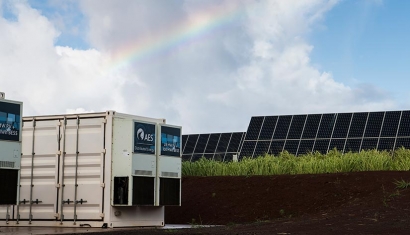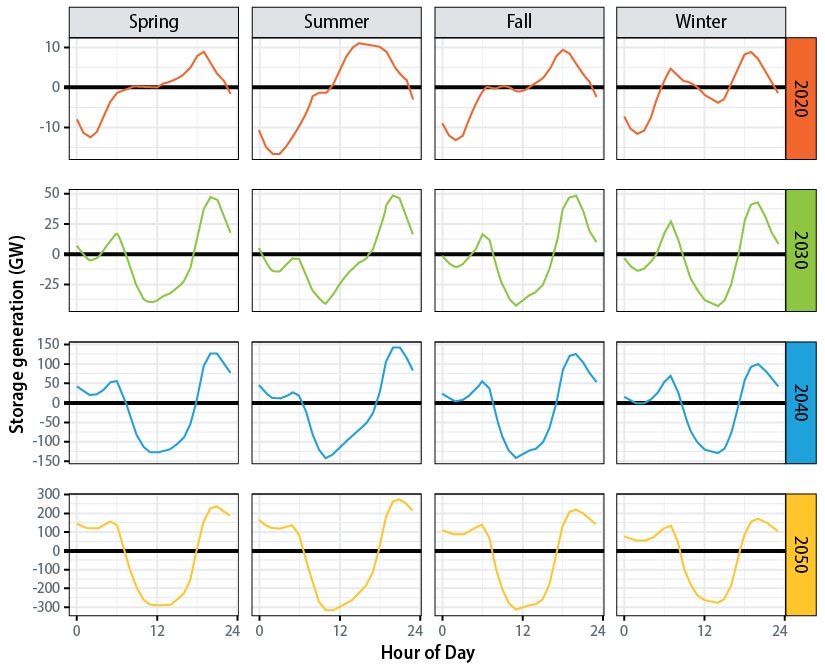
To help grid operators understand how to use this unique asset, in the latest phase of the Storage Futures Study (SFS) the National Renewable Energy Laboratory (NREL) modeled grid operations in future high-storage power systems, down to the hour. Findings are published in an NREL technical report.
"We once again find that the potential future energy system with large quantities of energy storage could successfully balance load 24/7," said Jennie Jorgenson, principal investigator of the study. "On top of that, we find power systems with high levels of energy storage operate more efficiently by storing otherwise unused renewable energy to displace costly generation from other sources."
Novel Modeling To Study Operational Benefits of Energy Storage
In a previous study in the SFS series , NREL added new modeling capabilities to its publicly available Regional Energy Deployment System (ReEDS) model to better represent the value of energy storage when it is allowed to provide grid services—an inherently complex modeling challenge. ReEDS produced a series of scenarios for possible storage deployment through 2050.
This latest work returns to the same scenarios and uses a commercially available production cost model called PLEXOS to confirm the energy storage buildout that ReEDS estimated yields operational benefits to the grid. The findings are encouraging as ReEDS continues to push the envelope and evaluate bulk power system evolution with high shares of renewable energy and energy storage.
"We're excited to move toward providing the modeling and analysis community with a publicly available tool that can capture the complexities of highly decarbonized power systems," said Wesley Cole, a lead developer of ReEDS.
In the Peak Hours, Storage Is There for the Grid

The SFS previously found energy storage provides the most value by meeting peak demand, which shifts to later in the day with more photovoltaic generation. As the peak shifts into the evening, the duration of peak demand decreases and only a few hours of storage are needed, increasing the value of shorter-duration storage. Over time, NREL found the value of energy storage in providing peaking capacity increases as load grows and existing generators retire.
This latest modeling again confirms the high value of peaker-type storage applications. PLEXOS shows the energy storage assets are not running all the time throughout the year, but they exhibit high utilization during the 10 highest-demand hours of the day.
"Essentially, the storage technology plays a key role during peak demand when the power system needs energy and capacity the most," Jorgenson said. "We find this consistently across all scenarios and years through 2050."
NREL also finds high levels of energy storage increases the efficiency of different types of generation assets by reducing overgeneration from PV and wind and reducing costly start-ups of thermal generators. Fewer start-ups also reduces emissions, improving the health of neighboring communities.
Learn More in January 25 Webinar
Join a free webinar hosted by NREL from 12 to 1 p.m. on Tuesday, Jan. 25, to learn more about future grid operations with widespread storage deployment. Register to attend.
PHOTO: Power systems with high levels of energy storage could successfully balance load 24/7 and see other operational, economic, and environmental benefits. Photo by Dennis Schroeder, NREL

